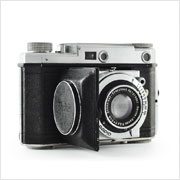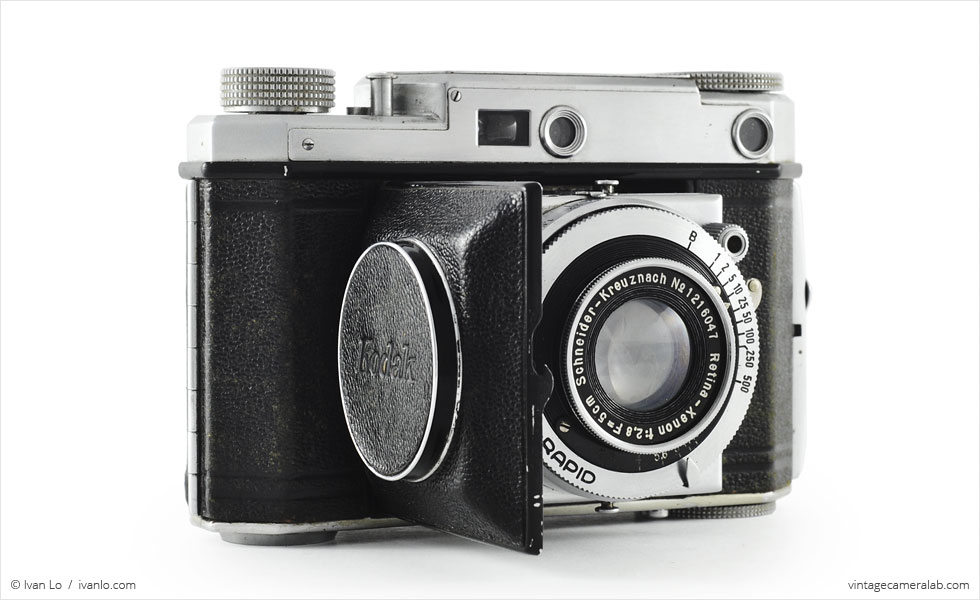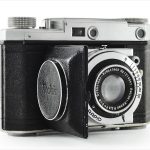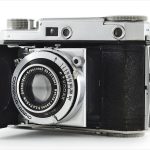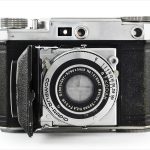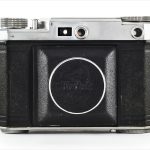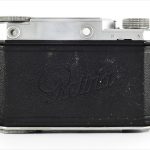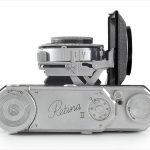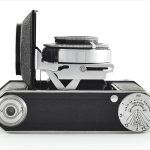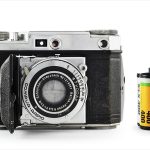Kodak Retina II Specifications
| Manufacturer: | Eastman Kodak Company |
| Origin: | USA |
| German Reich | |
| (modern day Germany) | |
| Made in: | German Reich |
| (modern day Germany) | |
| Introduced: | 1936 |
| Type: | Folding, Rangefinder |
| Format: | 135 Film |
| Dimensions: | 12.2 x 8.1 x 4.1 cm (closed) |
| 12.2 x 8.1 x 8.5 cm (open) |
Kodak Retina II Overview
The Kodak Retina II is a high-end 35mm folding camera introduced in 1936 by Kodak AG, Eastman Kodak’s branch in what was then Nazi Germany. Like the original Retina, the Retina II was designed by Dr. August Nagel, founder of Nagel (which he sold to Kodak) and Contessa as well as co-founder of Zeiss Ikon. There are a number of different variants of the Retina II, the first three of which were manufactured before and during the early stages of World War II. In 1941, the Kodak AG factory in Stuttgart halted operations and began contributing to the war by making time-delay fuses for shells used by the much-feared 88mm Flak anti-aircraft gun. Then, shortly after Germany’s surrender in May 1945, camera production resumed and more versions followed. The exact Retina II pictured here is a type 142 (produced from 1937-1939) which is characterized by having separate viewfinder and rangefinder windows as well as a knurled knob for advancing the frame.
To open this Retina II, one must first go to the bottom plate and press the small silver button located between the tripod socket and the depth of field calculator (the words here imply that this particular example was most likely manufactured for the French market). Once the lens (a Schneider-Kreuznach Retina-Xenon 50mm f/2.8 in this case) is out, the outermost ring on it can be used to adjust focus. The next ring in chooses the shutter speed and the aperture is selected by moving the small metal marker at the bottom of the lens. The shutter cocking lever can be seen at the one o’clock mark.
Moving to the top plate, we find the film rewind knob on the user’s left hand side, a rotating frame counter, a shutter button and threaded shutter cable socket (both mechanically linked to the actual shutter button found at 10 o’clock on the lens barrel), and finally the film advance knob. On the back behind the shutter button is a rewind switch that uncouples the film advance knob from the spool beneath it. Once this switch is in the “R” setting, the user can then activate the spring-loaded “arrow” lever located above the film door latch on the user’s left hand side of the camera and use the rewind knob to wind exposed film back into the cassette for processing.
My brother purchased this Retina II on my behalf for just a couple of dollars at a St. Louis area flea market. It’s a good thing he got such an amazing deal on it because this camera has seen much better days. The aperture, shutter speed controls, and the shutter button on the lens itself all seem to work correctly but the shutter button on the top plate is frozen in place and the focus ring has become disconnected. Cosmetically speaking, however, The camera looks great for its age. The leatherette is intact with minor scuffing and the body is free of dents and major scratches which makes the mechanical faults all the more difficult to accept.
Find your very own Kodak Retina II on eBay.
McKeown, James M. and Joan C. McKeown’s Price Guide to Antique and Classic Cameras, 2001-2002. (Grantsburg, WI, USA: Centennial Photo Service, 2001), p 362-368.
